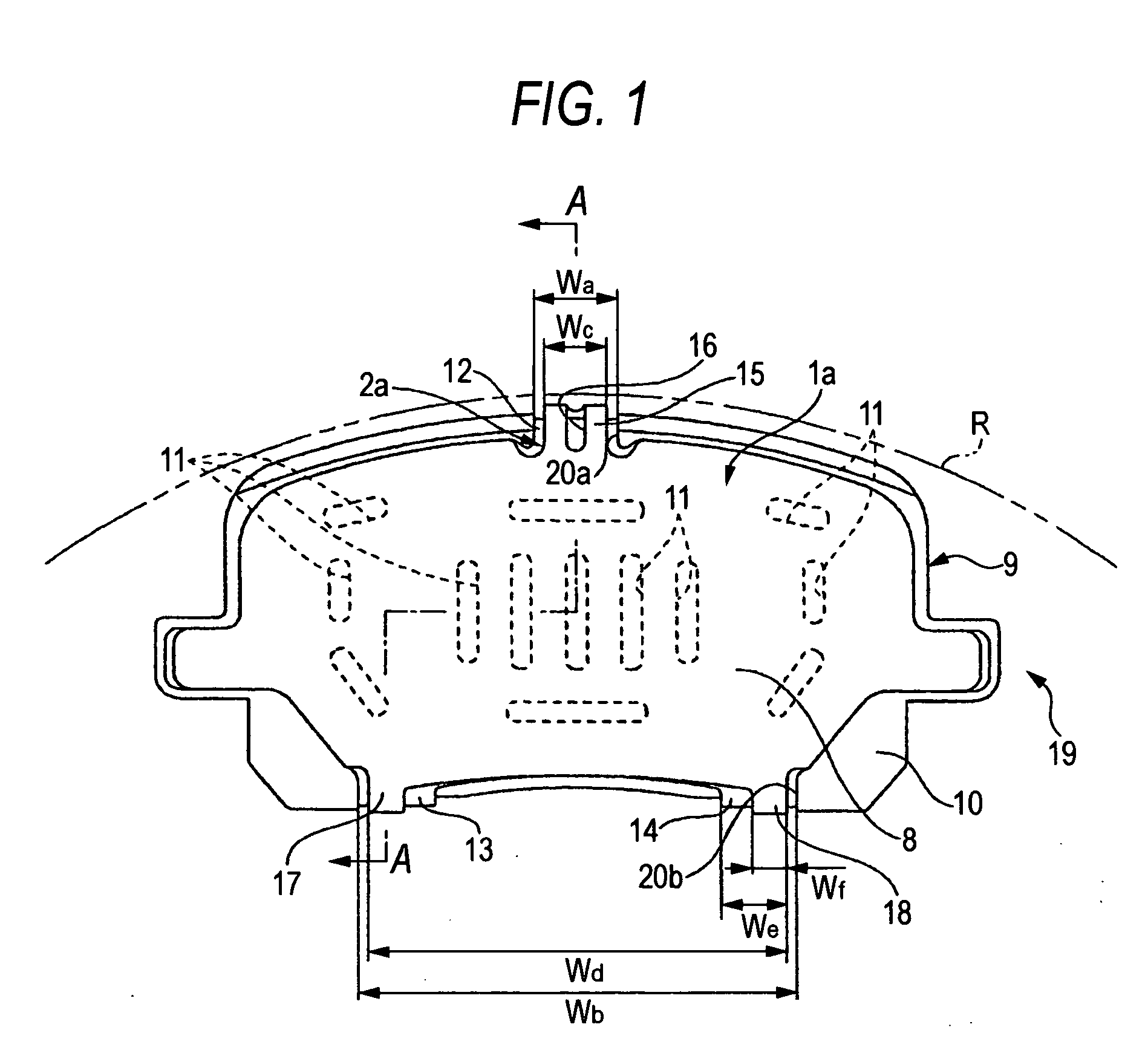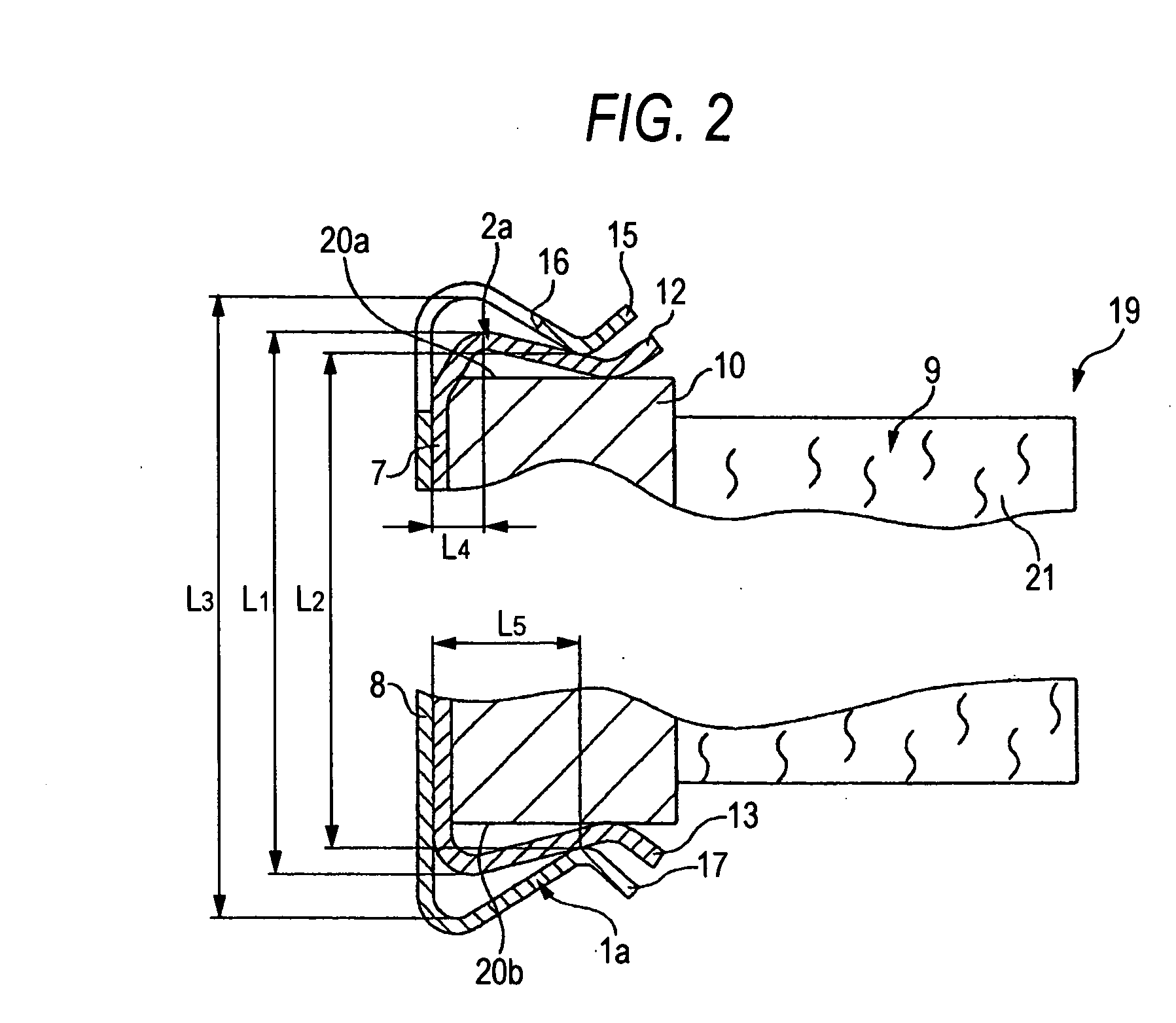Pad assembly for disc brake
a technology for disc brakes and pads, applied in the direction of braking elements, slack adjusters, braking members, etc., can solve the problems of difficult to achieve desired sliding characteristics with respect to the rear surface of shim plates, and easy generation of brake noise, so as to achieve smooth sliding, prevent uneven wear of pads, and facilitate movement of calipers
- Summary
- Abstract
- Description
- Claims
- Application Information
AI Technical Summary
Benefits of technology
Problems solved by technology
Method used
Image
Examples
first embodiment
[0050] A first embodiment of the invention will be described with reference to FIGS. 1 to 3. A pad assembly 19 for a disc brake according to the present embodiment is provided with an inner shim plate 2a additionally provided at a rear surface (right side surface of FIG. 2) of a pressure plate 10 of a pad 9, and an outer shim plate 1a whose main body part 8 is directly superimposed on a main body part 7 of the inner shim plate 2a. The inner shim plate 2a is made of metal materials such as stainless steel like SUS301-CSP. One surface (rear surface of FIGS. 1 and 3, right surface of FIG. 2) of the main body part 7 of the inner shim plate 2a is coated with NBR-based rubber. Perforation holes 11 and 11 are formed in a plurality of places of the main body part 7 in an axial direction of a rotor which is indicated by R, that is, a width direction of the main body part 7.
[0051] An outer end in a rotor radial direction, that is, an end (upper end of FIGS. 1 to 3) in a height direction of t...
second embodiment
[0066] Next, FIG. 4 shows a second embodiment of the invention. Unlike the above-described first embodiment, in the second embodiment, one intermediate shimplate 22 is interposed between the main body part 7 of the inner shim plate 2a and the main body part 8 of the outer shim plate 1a. The intermediate shim plate 22 is formed of metal materials such as stainless steel like SUS301-CSP in at a bular'shape. At least one of the shim plates 22 and 2a is coated with grease such that grease is interposed between the intermediate shim plate 22 and the inner shim plate 2a. Further, at least one of the shim plates 22 and 1a is coated with grease such that grease is interposed between the intermediate shim plate 22 and the outer shim plate 1a.
[0067] In the present embodiment having the above-described constitution, the outer shim plate 1a can be smoothly sliding with respect to the intermediate shim plate 22. Further, since a pad assembly 19a is formed by mounting three shim plates 1a, 22 an...
PUM
 Login to View More
Login to View More Abstract
Description
Claims
Application Information
 Login to View More
Login to View More - R&D
- Intellectual Property
- Life Sciences
- Materials
- Tech Scout
- Unparalleled Data Quality
- Higher Quality Content
- 60% Fewer Hallucinations
Browse by: Latest US Patents, China's latest patents, Technical Efficacy Thesaurus, Application Domain, Technology Topic, Popular Technical Reports.
© 2025 PatSnap. All rights reserved.Legal|Privacy policy|Modern Slavery Act Transparency Statement|Sitemap|About US| Contact US: help@patsnap.com



